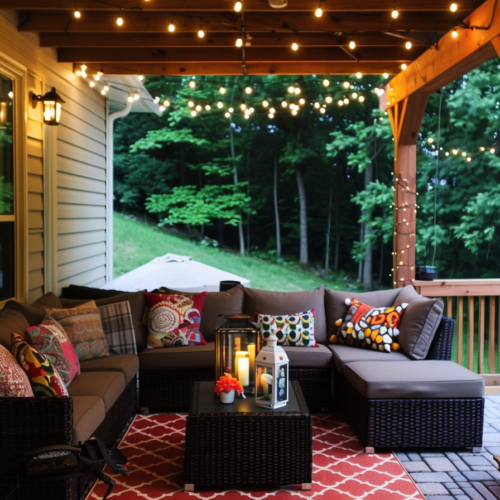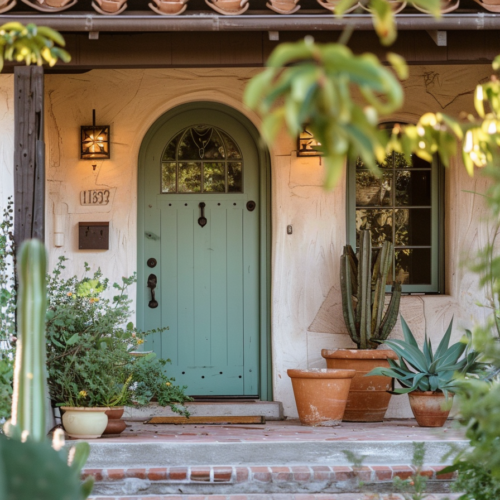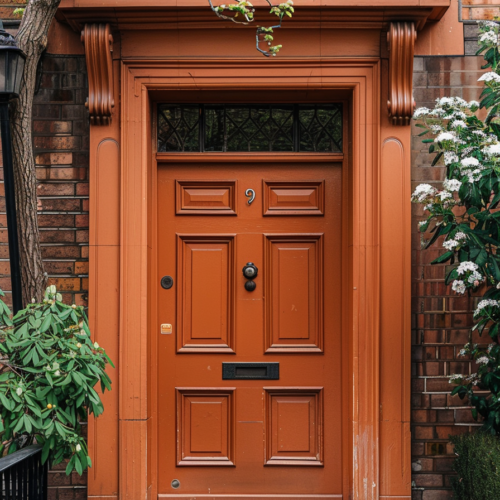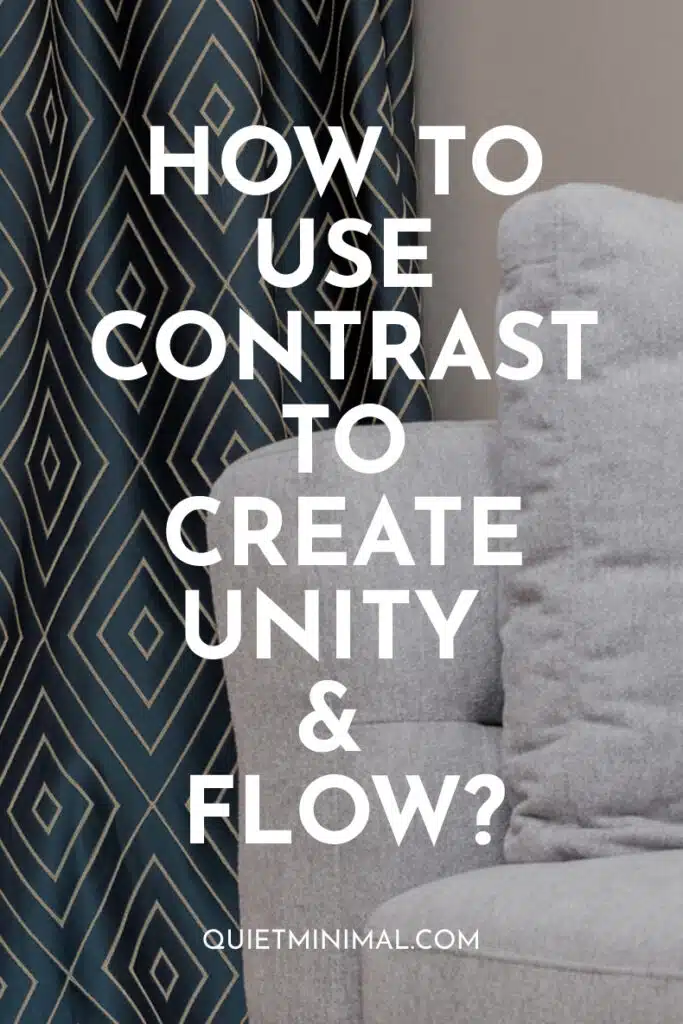
Have you ever walked into a room that felt “off”? It could have had too much furniture or too many patterns competing. These are signs of imbalanced design, but don’t worry – there’s a way to fix this!
You can design a harmonious interior for your home without complexity. And you can create an inviting space you’ll love daily with the right combination of contrast and unity.
Contrast in your home decor can help bring balance and flow into any room. By understanding the power of contrast in interior design, you can achieve harmony in your home.
Keep reading to learn how contrast creates unity and flow throughout your living space.
Understanding Contrast In Interior Design
Contrast is visually pleasing and helps draw attention to certain features. Plus, It allows other elements to blend into their surroundings.
Contrasting colors – such as light and dark shades of the same hue – are famous for adding depth to a room’s palette. In interior design, texture, form, and materials are other ways to use contrast.
Combining different textures like wood and metal will add dimension. While using two types of artwork or furniture pieces with similar shapes but different sizes gives an orderly yet dynamic feel to the overall look.
Using contrast in your home interior design doesn’t mean you need to go overboard. Select one feature element (such as color) and ensure it pops up throughout the entire space.
This technique will ensure that everything looks cohesive without feeling matchy-matchy or busy. You can achieve a harmonious atmosphere that exudes balance and flow with placed contrasts and chosen details.
Utilizing Color To Create Contrast
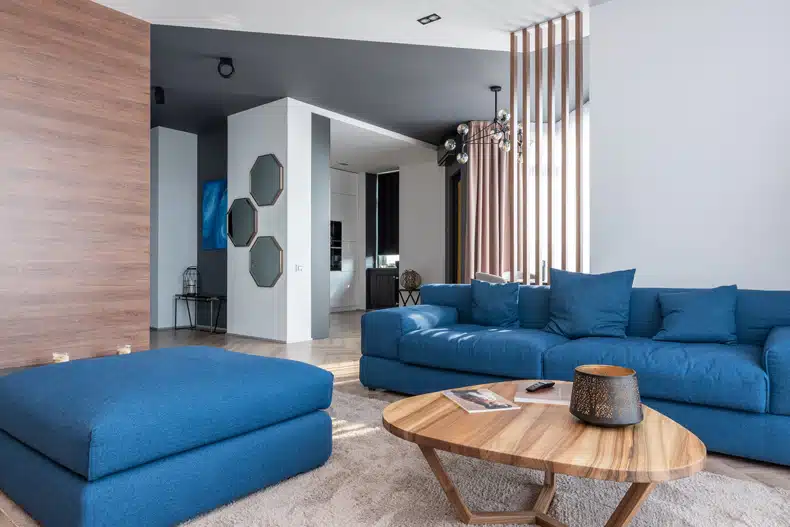
Different colors affect the space, and you can use them to create an impactful look. Using lighter colors for walls and furniture can make your room feel more spacious, while darker colors add depth.
Additionally, by adding accent colors with bright hues or muted tones, you can draw attention to certain areas of the room.
Contrasting colors also help give a sense of unity among different pieces as they blend without looking too uniform. When creating this effect, avoid matching identical shades side-by-side.
Instead, pick complimentary or contrasting tones that still complement each other. For example, pairing navy blue and light purple give any room a harmonious yet dynamic atmosphere.
Mix up textures for a unique home décor. Contrast matte and glossy finishes to create a harmonious look.
Using Light And Dark Contrast To Create A Flowing Space
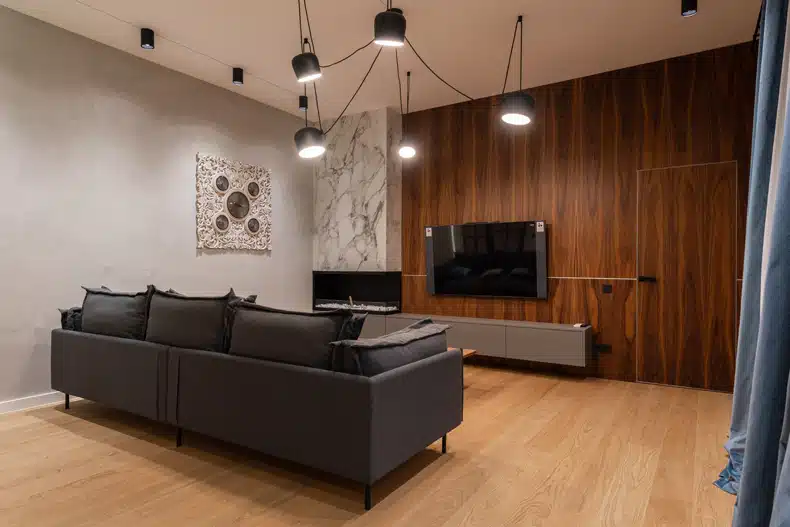
Using light and dark contrast to create a flowing space harmonizes your home interior design. It’s about finding the right balance between dark, moody colors and bright, airy hues.
One approach to do this is by introducing lighter tones into darker spaces. For example, use light wood furniture against a dark wall color or introduce white accessories on top of black furnishings.
This way will help break the darkness without completely removing its impactful presence. Also, add statement pieces, like artwork or patterned rugs, to highlight contrasting elements.
Remember to incorporate natural lighting in your home to create harmony through contrast. This can transform any space, no matter how small or large. Well-placed windows can make a room brighter and fill it with warm sunlight during the day.
Consider installing dimmers to adjust your lights according to the atmosphere you want to create. You’ll get a cozy ambiance and an energizing feel!
Combining Textures To Create Harmonious Contrast
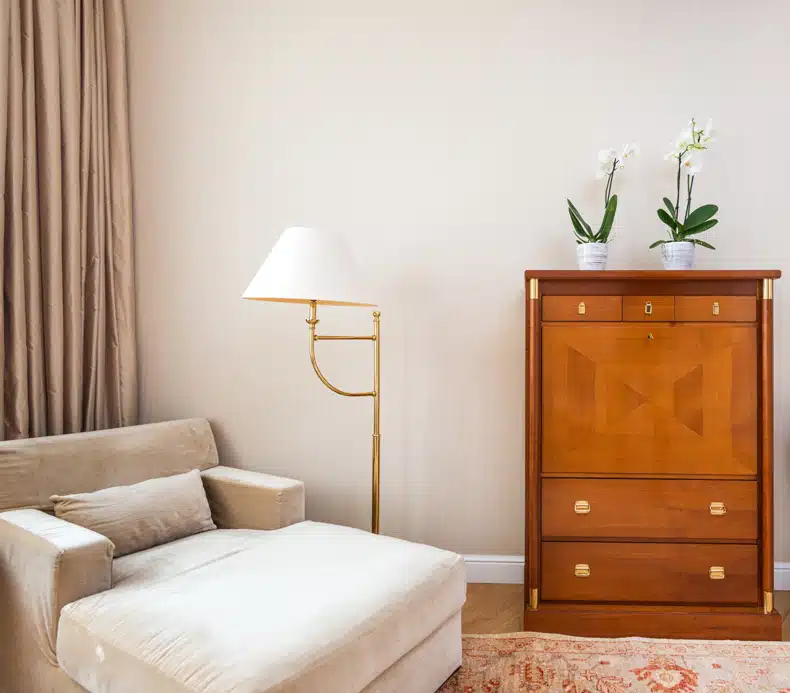
The contrast between materials can add depth and interest while keeping the look unified. For example, mixing metals with natural fabrics like wool or cotton creates a visually pleasing balance that works in any decor.
Use furniture and artwork as color inspiration for walls and fixtures. These tips will give a unified look without being too uniform.
Consider scale to best use contrast within your space. The juxtaposition of various sizes offers visual variety and keeps things interesting! Incorporating large and small elements into each room helps break up the monotony.
Incorporating Pattern To Create Contrast
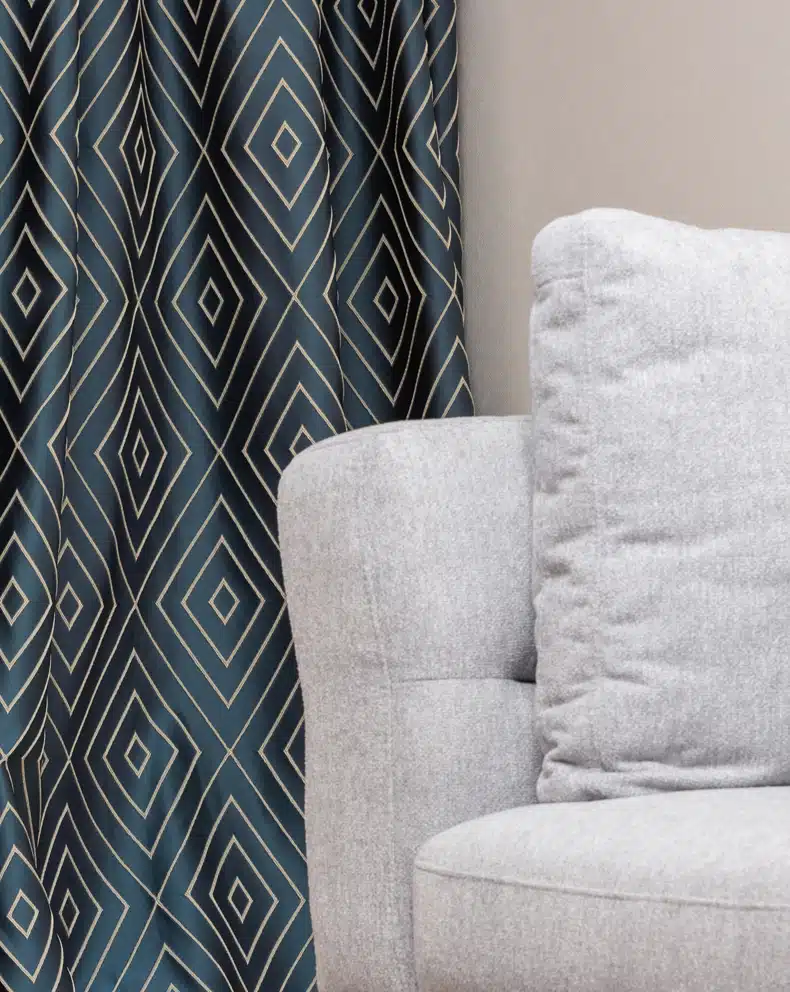
Let’s take it further and explore how to use patterns to create contrast. A pattern is a versatile tool for creating contrast because you can mix colors, shapes, and textures.
This design tip creates visual interest that brings together elements of the space while still being distinct from each other. Choose stripes, polka dots, or geometric patterns. They will help bring out contrasting colors and tones in your interior design.
For example, if you have two walls painted with different shades of blue. Adding a striped pattern will make the transition much smoother without blending both colors. Additionally, incorporating patterns allows you to add depth to the room, which helps prevent monotony throughout the space.
Through pattern contrast, you’ll be able to create a unified look that feels cohesive yet dynamic. Remember to keep the area manageable by blending and emphasizing differences for a harmonious result.
Implementing Contrast In Unexpected Ways
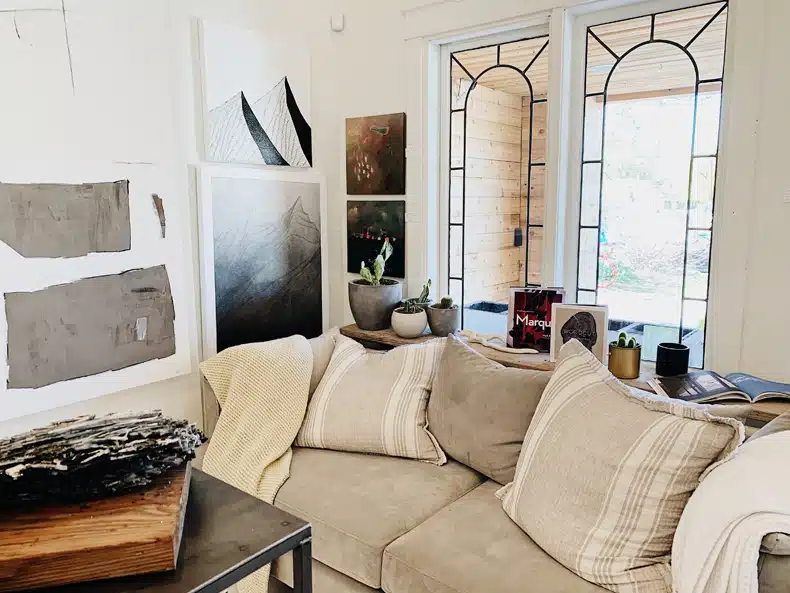
Implementing contrast in unexpected ways can help take your space’s aesthetic to a new level. You can do this in a variety of ways.
One approach to achieve this is by incorporating material contrasts, such as pairing soft materials with hard ones or vice versa. For example, you could put shaggy pillows on leather couches or sleek marble countertops next to rustic wood cabinets.
These pairings will bring out the best of both items, allowing them to stand out while creating balance and harmony within the design scheme.
You can use color contrast in unique ways too. One approach is combining complementary colors. Try combining shades that don’t usually go together, like black and yellow or green and pink. This tip will add depth and dimension to your decor without overwhelming or garish looking.
Applying Contrast To Furniture And Accessories
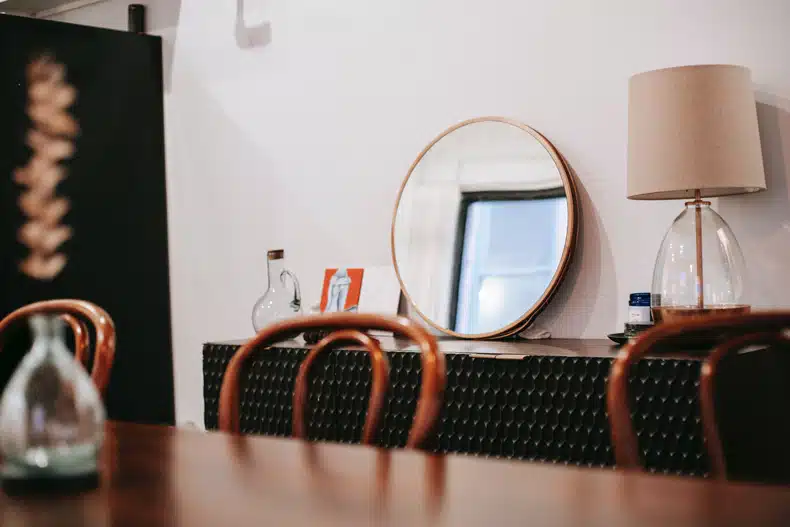
We’ve already discussed how contrasting colors, shapes, and textures make spaces attractive. Now let’s look at how to incorporate this idea into furniture and accessories.
Adding furniture with different styles or materials can apply contrast while maintaining harmony. For example, combining two chairs made from wood and metal will give the room texture without clashing too much.
Additionally, mixing traditional elements with modern ones helps bring both old and new aesthetics. (Read this article to learn more)
As mentioned above, artworks are another excellent option for introducing contrast while keeping everything cohesive. Incorporating artwork with contrasts allows you to have bolder pieces without overwhelming the rest of the decor.
As long as all the items share commonalities, such as complementary colors or similar themes, they should blend well together when placed in strategic locations across the space.
Leveraging Contrast In Finishing Touches
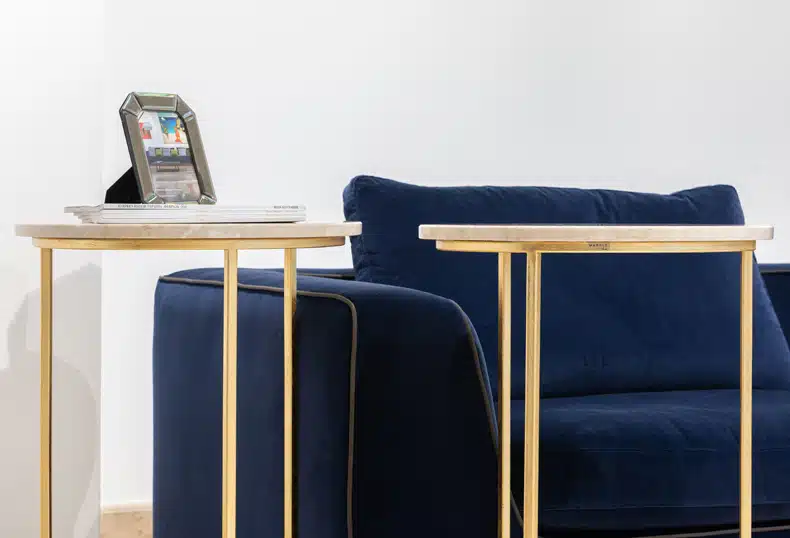
Contrast is essential for creating a unified and appealing design. It’s the perfect way to make your home stand out, but it can take a lot of work. That’s why having the right finishing touches in place is so important.
By leveraging contrast with accessories such as rugs, lamps, pillows, and artwork, you can create an interesting visual that will help bring together your entire home interior design.
In one area of your house, lighter colors or bold patterns may work better than in another, giving each room its distinct identity. This trick gives you more freedom when decorating and choosing items that fit well within each space.
Conclusion
In conclusion, contrasting interior designs can create a harmonious and unified home. It is not about stark opposites but rather subtle variations that bring unity and flow to any room.
By understanding the principles of color, light, texture, pattern, furniture, accessories, and finishing touches, you can use contrast to achieve balance within your space.
Follow Quiet Minimal on Pinterest for more home design tips and inspiration.
